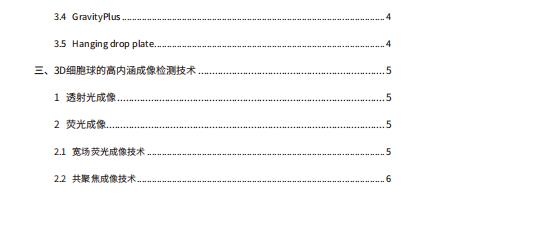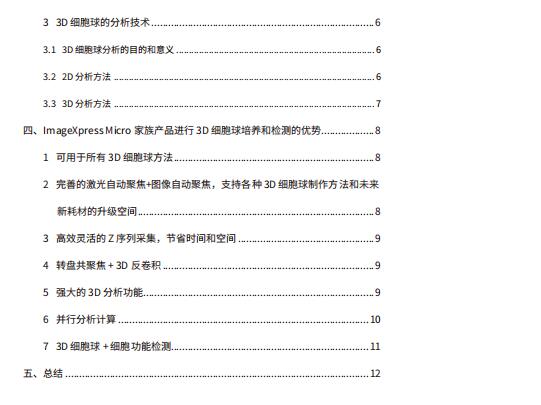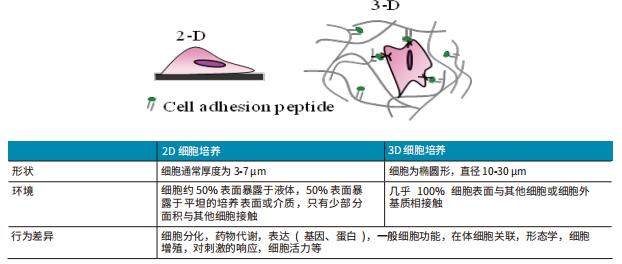


I. Overview
1 Current methods of cell culture and observation Since the 19th century, when the microscope appeared, people began to observe the cell structure and developed cell culture techniques in the twentieth century. The culture of single-layer cells is relatively convenient, and the commercial microscope is very suitable for the observation of flat and thin samples. Therefore, in the middle and late 20th century, 2D cell culture methods were widely used for biological research, and Conduct research on drug screening, development, and disease treatment.
2 2D and 3D cell culture and effects on cells In general, 2D cell culture is not only used to study different types of cells in vitro, but also used for drug screening and evaluation. This single layer culture system allows cells to grow on the surface of polyester or glass while the culture medium present provides nutrients for cell growth. In this way, countless biologists have greatly advanced the advancement of biology and medicine.
However, its simple method of operation also causes this model to fail to accurately describe and simulate the complex microenvironment of cells in the body and various complex biological processes such as cell signaling, biochemical processes or geometric changes. In addition, the data obtained by 2D cell culture methods can be misleading and unpredictable in vivo. These reasons have prompted many scientists to turn their attention to 3D cell culture technology, a method that can more accurately describe the true microenvironment of cells in vitro. Cells grow in vitro in a three-dimensional environment to produce specific biophysical and biomechanical signals that affect cell function, such as cell migration, cell adhesion, proliferation, and gene expression (see image below).

We know that there are many different methods of 3D cell culture, and different methods have their own advantages and disadvantages. Unlike 2D culture, 3D cell culture has the formation of tiny structures and complex environmental characteristics that promote cell differentiation and tissue formation. In fact, cells can withstand more morphological and physiological changes in a 3D environment than in a 2D environment. Studies have found that the composition and structure of cell substrates can not only affect gene expression, but also enhance cell-to-cell connections. For example, some genes that promote cell proliferation are inhibited in a 3D culture environment, so that they do not grow indefinitely as in 2D culture. 3D cell culture also promotes the growth of two different cell populations in a co-culture environment, enabling accurate reproducibility of tissue function. In addition, 3D culture technology enables cell microenvironment parameters (temperature, compound concentration, oxygen, pH, etc.) to be easily controlled and monitored.
However, 3D cell culture technology also has obvious defects, and these defects require technical advancement to make up for it. First, some matrigel can absorb harmful or unwanted substances, such as viruses, soluble factors, etc. from animals or other sources, which can interfere with cell culture. Some matrices have good cell adhesion, making the cell removal process more difficult. In addition, 3D cell culture technology is a cost-effective technology that eliminates the animal drug testing process during the drug evaluation phase. The entire process can be automated and repeatable.
3 Extension and Prospects of 3D Cell Technology With the development and maturity of 3D cell culture technology, a large number of new related technologies have emerged, such as microfluidic technology and micro-organ technology. These technologies make the control and monitoring of the culture environment easier, and at the same time, the speed at which the drug advances into the clinic is greatly accelerated, and the reliability of the evaluation results is greatly increased.
Download the full manual, please scan the QR code below

We're Professional Supplier Extract Powder manufacturers and suppliers in China specialized in providing high-quality products at low price. We warmly welcome you to buy or wholesale bulk Supplier Extract Powder for sale here from our factory. For a free sample, contact us now.
Supplier Extract Powder,Supplier Extract ,Supplier Powder Manufacturer in China
Shaanxi Kang New Pharmaceutical co., Ltd. , https://www.bio-pharmacies.com